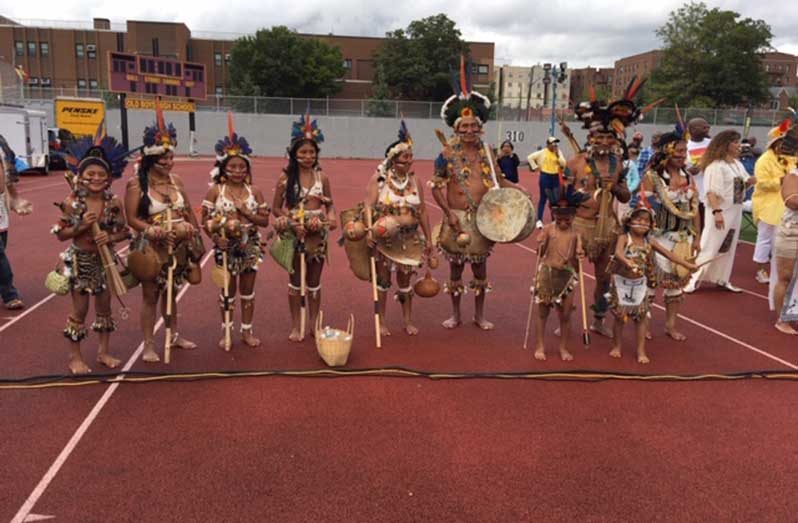By Francis Quamina Farrier
SEPTEMBER is observed as Indigenous Heritage Month by many Indigenous peoples of the Americas, including the USA. This is also here in Guyana, where September 10 is celebrated as the Day for National Indigenous Hero, the Hon. Stephen Campbell. He was the very first Indigenous Guyanese to serve in the country’s legislature (Parliament). Stephen Campbell worked tirelessly for the upliftment of his people, especially for land rights. He died on May 12, 1966, just two weeks before Guyana’s independence on May 26, 1966. Campbell Town, which is adjacent to Lethem in Region Nine, is named in his honour and memory.
For this article, I decided to look at the fortunes, or lack thereof, of the Indigenous peoples of the “A-B-C” countries of South America; Argentina, Brazil, Bolivia, Colombia and Chile.
ARGENTINA
Argentina is located at the southern end of South America and is 1.07 million square miles in size — second only to Brazil in South America. It is a country which I have visited on a few occasions. With a population of 45 million, 600,000 identify themselves as being Indigenous. However, it has been established that some do not admit to being Indigenous, because of the racism against their people in Argentina. There are also many Argentines who are partly Indigenous.
In 1995 the government of Argentina established a Federal Law to combat racism against Indigenous citizens. A law which previously prohibited the use of Indigenous names was also revised. At this time, the country is being hard-hit with the COVID-19 pandemic. There are now over 402,000 cases and 9,000 deaths; many being Indigenous.
BRAZIL and BOLIVIA

who has visited all other countries in South America,
excepting Venezuela (Photo compliments
of Desmond Ali)
Guyana’s giant neighbour Brazil is 3.2 million square miles in size, and the largest country in South America. Its population is 212.5 million. The Indigenous population is estimated at 997,000. The majority of the Indigenous peoples of Brazil have been living on the edge of society since the arrival of the Portuguese in 1500. A lot of their ancestral lands, principally in the forested areas of the country, have been taken away from them by greedy ranchers of European heritage. In many instances, Indigenous Brazilians have been murdered with impunity, especially during the more recent brazen land- grabbing. Such reports have been made in several international media over the past two decades.
The news is not good either with the COVID-19 pandemic in Brazil. There are 3.900 million cases and 121,000 deaths as of the first week of September. Brazil’s COVID-19 fatalities are second only to the United States. Reports out of Brazil are that the government is not letting Doctors Without Borders go to Indigenous villages to assist the people. Some of the Indigenous leaders have organised demonstrations against the Brazilian government. Meanwhile, over 170 esteemed Indigenous elders and leaders have already died of the disease. They include two of Brazil’s most influential Indigenous Leaders; 66-year-old Paulo Paiakan and 71-year-old Chief Aritana Yawalapiti. Their deaths are a devastating blow to the Indigenous communities. Over the past four months, a growing number of Brazilians have been making their way into Guyana, entering illegally primarily across the Takutu River in Region Nine.
Fortunately, the Indigenous citizens of neighbouring Bolivia experience a much better standard of living. In landlocked Bolivia, 2.262 million of the 11 million population is Indigenous. Over 50 per cent of the population is “Mestizo,” which is a mix of Indigenous and European. The Indigenous Bolivians enjoy a much higher standard of living than those in Argentina and Brazil, for example. There is now a growing Indigenous bourgeoisie in Bolivia. Some Indigenous women live the high-society life, wearing the very best and are even able to employ one or even two bodyguards. Bolivia was the first and only country in South America to have elected an Indigenous person as President. Evo Morales, an Indigenous Bolivian, became president of the country and served two terms. Under his presidency, the country developed even more and Indigenous citizens improved their wealth immensely. His popularity remains intact even now.
Colombia and Chile
With a population of 50.6 million, Indigenous Colombians total 1.9 million. Through organisation and agitation, they have been successful in increasing their land base and securing land titles which cover one-third of the country. At present, there is a total of 334 autonomous Indigenous communities in Colombia. When the COVID-19 pandemic struck Colombia, Indigenous leaders took immediate action to keep it from spreading into their communities. All public roads into their communities were blocked and guards stationed. Only vehicles taking food and other essentials were allowed in. At this time, there are 608,000 cases of the COVID-19 in Colombia and 19,400 deaths.
Like Guyana, there are nine Indigenous nations in Chile. Located on the western flank of South America facing the Pacific Ocean, Chile is shaped like a long bora, being 2,653 miles long from north to south, and just 109 miles at its widest section. The population of Chile is 19.12 million, with 1.5 million Indigenous citizens. Classified as being one of the more stable and developed countries in South America, the welfare of the Indigenous population is now foremost in the drafting of a new constitution for Chile.
MEMORIAL
In closing, I invite you to think of the late Guyanese Lokono artist and archaeologist George Simon, AA, of St. Cuthbert’s Mission, who went to be with his ancestors two months ago. The planned paving of the access road from the Soesdyke-Linden Highway into St. Cuthbert’s, may well be christened “The George Simon Drive” by the bishop, on completion.




.png)









